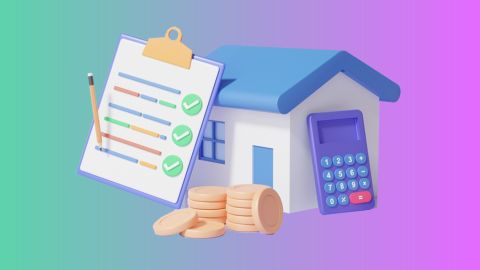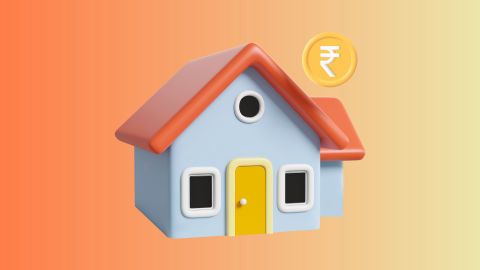Navigating the mortgage loan process can seem daunting, but understanding the timeline can make it more manageable. The mortgage loan process timeline involves several key stages, from pre-application to post-closing, each critical to securing a loan against property. Knowing what to expect and when can help you plan better and avoid any unnecessary delays. In this article, we will break down each phase of the mortgage loan process, providing a clear roadmap for potential borrowers. Whether you are considering a loan against property or another type of mortgage loan, this guide will help you understand the steps involved and the factors that influence the overall timeline. Bajaj Finance offers a streamlined process for obtaining a loan against property, making it easier for you to finance your needs with minimal hassle.
Pre-application phase
Before you begin the mortgage loan process, the pre-application phase is crucial. This stage involves researching different lenders, understanding your financial standing, and gathering the necessary documents. Evaluating your credit score, income, and existing debts are essential to determine your eligibility for a mortgage loan. During this phase, it is beneficial to use tools like the loan against property EMI calculator to estimate your monthly payments and budget accordingly.
Application phase
The application phase is where you formally apply for the mortgage loan. You will need to complete the lender’s application form and submit required documents, such as proof of income, property details, and identification. Accurate and complete information is vital to prevent delays. During this stage, the lender will assess your application, and you may be required to pay an application fee. Bajaj Finance ensures a smooth application process for a loan against property, guiding you through each step with ease. With a Bajaj Finserv Loan Against Property, you can unlock high-value funding at competitive interest rates. Whether it is for medical emergencies, business growth, or personal goals, your property empowers you to access the resources you need with ease. Don’t wait—Get our loan against property of up to Rs. 10.50 Crore* and turn your asset into a solution!
Processing phase
Once your application is submitted, the processing phase begins. During this stage, the lender will verify your information, check your credit history, and appraise the property you intend to mortgage. The appraisal is a crucial part of the process as it determines the property's market value. The lender may also conduct a title search to ensure that there are no legal issues with the property. This phase can take a few days to several weeks, depending on the complexity of your application and the responsiveness of external parties involved.
Underwriting phase
The underwriting phase is one of the most critical steps in the mortgage loan process. In this phase, the lender's underwriter evaluates your entire financial profile to determine the risk of lending to you. They will review your credit score, income, debts, and the property's appraisal report. The underwriter may request additional information or clarification on certain aspects of your application. Approval in the underwriting phase means you are one step closer to obtaining your loan against property. The experienced team of Bajaj Finance ensures thorough and efficient underwriting, expediting your loan process.
Loan approval and closing
Once the underwriting phase is successfully completed, the next step is loan approval and closing. The lender will issue a loan commitment letter, outlining the loan amount, interest rate, and terms. During the closing process, you will sign the loan agreement and other necessary documents. You may also need to pay closing costs, such as processing fees, appraisal fees, and legal fees. Bajaj Finance provides clear guidance on the fees and charges associated with a loan against property, ensuring transparency and no hidden costs. By using your property as collateral, you can unlock access to large funds of up to Rs. 10.50 Crore*—it is a smart way to manage your finances with ease! Get funds within 72 hours* of approval.
Post-closing phase
After the loan is closed, the post-closing phase begins. This stage involves the disbursement of loan funds and the start of your repayment schedule. It is important to keep track of your repayment schedule to avoid late payments, which can affect your credit score. Using the features offered by Bajaj Finance, such as flexible repayment options and online account management, can help you manage your loans efficiently.
Factors influencing the mortgage loan process timeline
Several factors can influence the mortgage loan process timeline. These include the completeness and accuracy of your application, the lender's processing speed, and external factors such as property appraisal and title search. Understanding these factors can help you anticipate potential delays and prepare accordingly. Bajaj Finance gives a streamlined process and efficient customer service can help mitigate some of these delays, ensuring a smoother experience. For more details on how the mortgage loan process works, you can refer to their comprehensive guides.
Conclusion
Understanding the mortgage loan process timeline is crucial for a smooth borrowing experience. From pre-application to post-closing, each phase has its significance and requirements. By staying informed and prepared, you can navigate this process with confidence. Bajaj Finance offers a seamless loan against property service, helping you achieve your financial goals with minimal hassle. Explore their offerings and streamline your mortgage loan journey today. Enjoy lower EMIs starting from Rs. 750/lakh* and longer repayment tenures.




